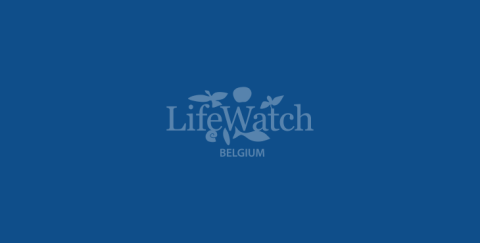Installation of a GPS tracking network for large birds
On the 18th of June 2013, a press conference was held at the Flanders Marine Institute (VLIZ) about the installation of a GPS tracking network for large birds in Flanders.

In the framework of the Flemish contributions to the LifeWatch infrastructure, the Research Institute for Nature and Forest (INBO), Ghent University and the Flanders Marine Institute (VLIZ) installed a high-tech sensor network to monitor the habitat use and migration patterns of large birds, such as the herring gull (Larus argentatus Pontoppidan, 1736), the lesser black-backed gull (Larus fuscus Linnaeus, 1758) and the western marsh harrier (Circus aeruginosus (Linnaeus, 1758)).
The birds are equipped with lightweight, solar powered GPS tags. The tags gather and store data on the bird's activity and 3D position in time, and transmit these data to ground stations when a connection can be established. From the ground stations data are transferred to and centralized in a virtual laboratory, allowing researchers to reconstruct the bird's individual flight path and behavior, helping them answer questions regarding the birds' habitat use and migration patterns.
In addition, webcams were installed in Oostende near nests of herring gulls and in Zeebrugge near nests of lesser black-backed gulls. Through these webcams the nesting behavior can be observed in detail.
Up to now, researchers studying the migration patterns of large gulls were limited to observation data from color coded individuals, which is also strongly influenced by the position and distribution of the observers themselves. In the framework of Natura2000, the imminent “EU discard ban” (which prohibits fishermen to throw fish waste overboard) and the urban nuisance problem, more detailed information is needed about the ecology of large gulls. The western marsh harrier is listed on Annex I of the Birds Directive of Europe.
The technology used in this sensor network was developed at the University of Amsterdam (UVA) (http://www.uva-bits.nl), and is also used in the Dutch LifeWatch infrastructure.
The INBO and Ghent University will process the scientific results, while VLIZ is responsible for the installation, maintenance and data flows of the sensor network.
In total, 3 ground stations, 11 antennas and 37 GPS loggers will be deployed (27 for large gulls, and 10 for the western marsh harrier).
Links to the flight paths, live feed from the web cam in Oostende and the media gallery can be found below
The birds are equipped with lightweight, solar powered GPS tags. The tags gather and store data on the bird's activity and 3D position in time, and transmit these data to ground stations when a connection can be established. From the ground stations data are transferred to and centralized in a virtual laboratory, allowing researchers to reconstruct the bird's individual flight path and behavior, helping them answer questions regarding the birds' habitat use and migration patterns.
In addition, webcams were installed in Oostende near nests of herring gulls and in Zeebrugge near nests of lesser black-backed gulls. Through these webcams the nesting behavior can be observed in detail.
Up to now, researchers studying the migration patterns of large gulls were limited to observation data from color coded individuals, which is also strongly influenced by the position and distribution of the observers themselves. In the framework of Natura2000, the imminent “EU discard ban” (which prohibits fishermen to throw fish waste overboard) and the urban nuisance problem, more detailed information is needed about the ecology of large gulls. The western marsh harrier is listed on Annex I of the Birds Directive of Europe.
The technology used in this sensor network was developed at the University of Amsterdam (UVA) (http://www.uva-bits.nl), and is also used in the Dutch LifeWatch infrastructure.
The INBO and Ghent University will process the scientific results, while VLIZ is responsible for the installation, maintenance and data flows of the sensor network.
In total, 3 ground stations, 11 antennas and 37 GPS loggers will be deployed (27 for large gulls, and 10 for the western marsh harrier).
Links to the flight paths, live feed from the web cam in Oostende and the media gallery can be found below



